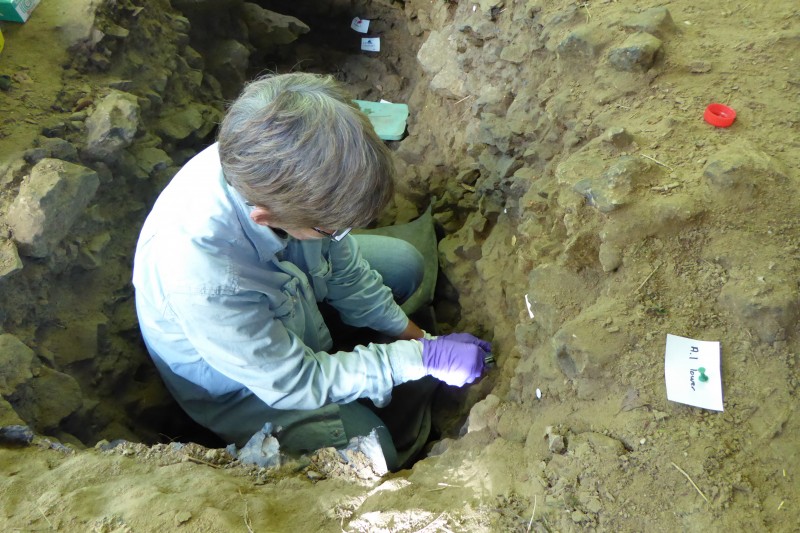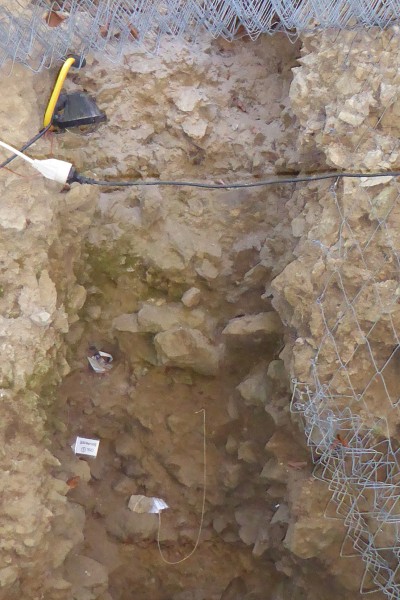DNA from sediment at known archaeological sites has confirmed the presence of Neanderthal remains, even when no bones are present, for the first time.
Researchers from Bournemouth University (BU) were part of a multinational team which collected and analysed 85 sedimentary samples from nine established archaeological sites with known hominin occupation.
The research - led by Viviane Slon, Matthias Meyer and Svante Paabo of the Max Planck Institute for Evolutionary Anthropology - investigated whether hominin DNA may survive in sediments at archaeological sites known to have been occupied by ancient hominins.

BU Associate Professor John Stewart and PhD student Monika Knul, alongside site director Dr Rebecca Miller from the University of Liège, took samples from the Trou Al’Wesse cave site in Belgium - the only site in the study with no Neanderthal remains.
DNA recovered from the sediment there now provides direct evidence for the past occupation of the site by Neanderthals.
Dr Stewart said: “This is exciting because we have actually managed to find evidence of humans without the actual bones themselves. We have found what are effectively Neanderthal remains, but biochemical rather than physical remains.”

“This highlights the fact that we can still get human genetic information out of sedimentary evidence if you don’t have the Neanderthal bones themselves.
“It can also help confirm theories around items like the stone tools that had been found at the site, as there was still some ambiguity around who lived there.”
He added: “DNA is often better than bones and findings like this are important in trying to understand how and when Neanderthals became extinct and when modern humans arrived.”
The BU team were the only English contributors to the study, which was led by the Max Planck Institute for Evolutionary Anthropology. The study also detected sedimentary Neanderthal remains at three other sites in Spain and Russia.
Skeletal remains of ancient hominins are rare and so evidence of Neanderthal occupation is often restricted to artefacts and other traces of human activity, such as bones with cut marks.
The research, published in Science today, demonstrates the feasibility of extracting DNA from sedimentary samples to confirm the presence of ancient hominins, even when no bones or other physical remains are found.
“By retrieving hominin DNA from sediments, we can detect the presence of hominin groups at sites and in areas where this cannot be achieved with other methods”, said Svante Pääbo, director of the Evolutionary Genetics department at the Max Planck Institute for Evolutionary Anthropology and co-author of the study.
“This shows that DNA analyses of sediments are a very useful archaeological procedure, which may become routine in the future.”



